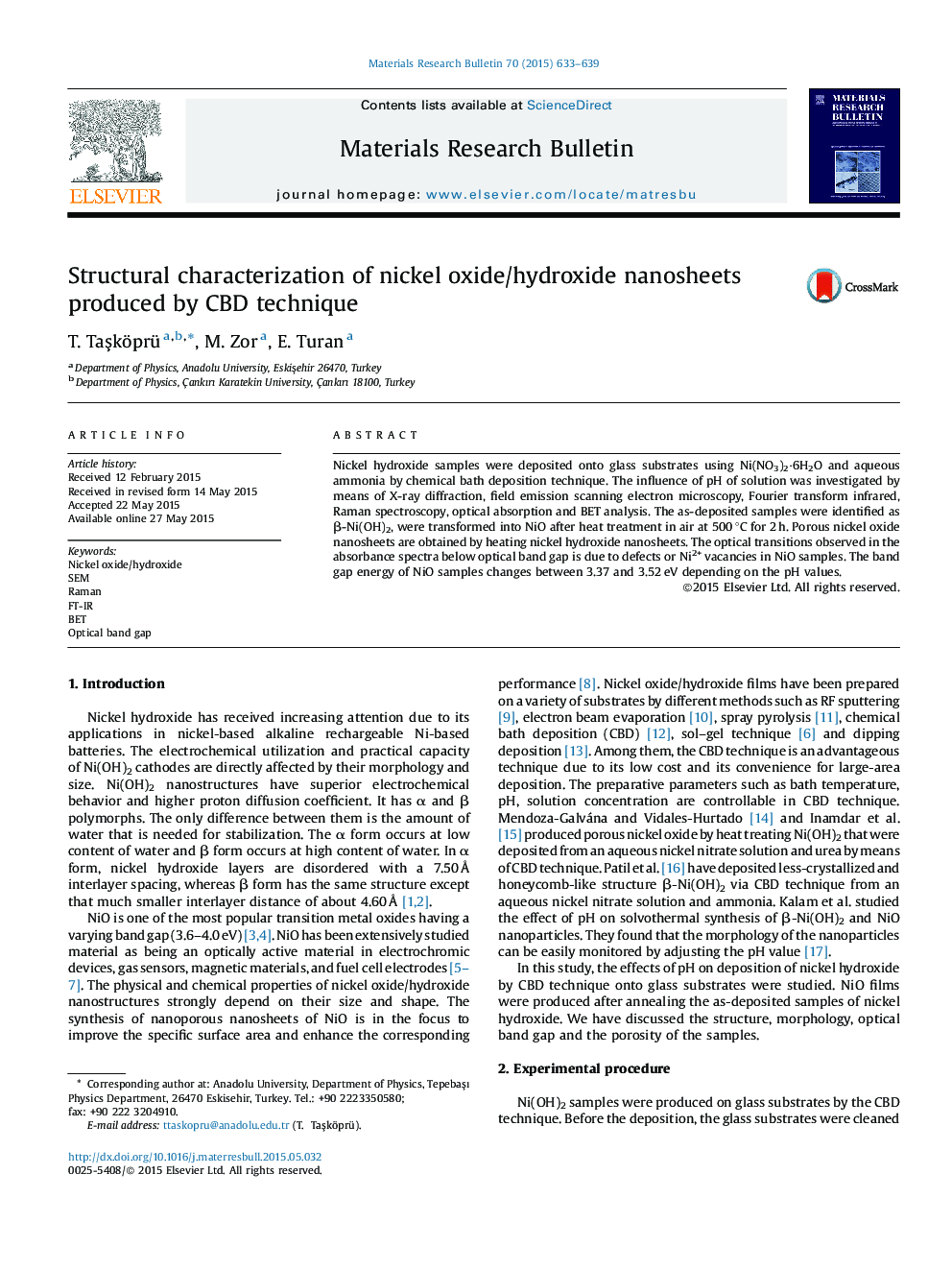| Article ID | Journal | Published Year | Pages | File Type |
|---|---|---|---|---|
| 1487341 | Materials Research Bulletin | 2015 | 7 Pages |
•The formation of β-Ni(OH)2 and NiO were confirmed with XRD, SEM, FT-IR and Raman.•Porous nickel oxide was synthesized after heat treatment of nickel hydroxide.•The increase in pH value changes the nanoflake structure to hexagonal nanosheet.•On increasing the pH from 8 to 11, the band gap decreases from 3.52 to 3.37 eV.
Nickel hydroxide samples were deposited onto glass substrates using Ni(NO3)2·6H2O and aqueous ammonia by chemical bath deposition technique. The influence of pH of solution was investigated by means of X-ray diffraction, field emission scanning electron microscopy, Fourier transform infrared, Raman spectroscopy, optical absorption and BET analysis. The as-deposited samples were identified as β-Ni(OH)2, were transformed into NiO after heat treatment in air at 500 °C for 2 h. Porous nickel oxide nanosheets are obtained by heating nickel hydroxide nanosheets. The optical transitions observed in the absorbance spectra below optical band gap is due to defects or Ni2+ vacancies in NiO samples. The band gap energy of NiO samples changes between 3.37 and 3.52 eV depending on the pH values.
Graphical abstractSEM images of (a) as deposited β-Ni(OH)2 and (b) NiO samples deposited with pH 10 solution. The inset figures shows the absorbance spectra of (a) β-Ni(OH)2 and (b) NiO samples.Figure optionsDownload full-size imageDownload as PowerPoint slide
